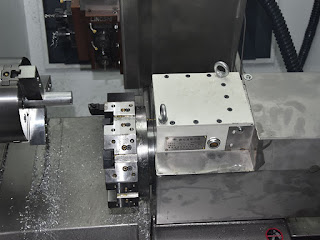1. What Are CNC Mills and Lathes?
1.1 Definition and Functionality
CNC mills and lathes refer to advanced machine tools that combine the capabilities of traditional lathes with milling functions. This integration allows for complex machining operations, making them essential in various manufacturing sectors. Also known as CNC turn-mill centers, these machines offer high processing efficiency and precision, which are crucial for producing intricate parts.
1.2 Importance in Manufacturing
CNC mills and lathes are particularly valuable in fields such as aerospace, automotive, and medical industries, where high accuracy is paramount. The ability to perform both turning and milling operations streamlines the production process, reducing setup times and improving overall productivity.
2. How Do CNC Mills and Lathes Work?
2.1 Basic Principles of Operation
CNC (Computer Numerical Control) technology automates the movement of machine tools. In a CNC lathe machine, the workpiece is rotated against a stationary cutting tool, allowing for precise shaping. Conversely, in a CNC mill, the cutting tool rotates while the workpiece remains fixed. The integration of both functions enables simultaneous turning and milling, enhancing machining capabilities.
2.2 Advanced Features
Modern computer numerical control lathe systems support complex programming and custom functionalities. This versatility allows operators to create intricate designs and process diverse materials, making CNC mills and lathes highly adaptable to various manufacturing needs.
3. What Should You Consider When Choosing CNC Mills and Lathes?
3.1 Configuration Options
When selecting a CNC mill or lathe, it’s essential to consider the specific configurations that suit your production needs. For instance, Tai’an Haishu’s CNC turn-mill centers offer various system selections, including KND and GSK systems, known for their excellent value. These systems support G-code programming and are compatible with multiple software options.
3.2 Cost Considerations
While advanced functionalities in CNC mills and lathes provide significant benefits, they often come at a higher cost. Customers must weigh these expenses against their production requirements and budget constraints, especially when considering high-end configurations.
4. What Are the Key Features of CNC Mills and Lathes?
4.1 Tool Turrets and Head Configurations
In a turn-mill center, the tool turret cannot be a standard 4-station electric turret; instead, it should include powered head functions. Options for powered heads can vary, including single, double, or triple configurations. A 12-station powered turret allows for both tools and powered heads, facilitating drilling, tapping, and milling in one setup.
4.2 Y-Axis Configurations
For those looking to enhance their machining capabilities, Y-axis powered turret configurations are available. These can be either vertical or interpolated Y-axes. The vertical Y-axis accommodates smaller workpieces, while the interpolated Y-axis, feasible only on slanted-bed CNC lathes, allows for larger pieces and complex curve machining by combining X, Y, and Z axes.
5. How Do CNC Mills and Lathes Enhance Production Efficiency?
5.1 Streamlined Operations
The combination of turning and milling functions in mini cnc lathe significantly streamline operations. By reducing the number of setups required for different machining processes, manufacturers can achieve higher throughput and lower production costs.
5.2 Precision and Quality
CNC technology ensures that every machining operation is performed with high precision, which is critical for maintaining quality standards in production. This accuracy not only improves product quality but also reduces waste, making CNC mills and lathes a cost-effective solution for manufacturers.
6. What Industries Benefit from CNC Mills and Lathes?
6.1 Aerospace and Defense
The aerospace industry relies heavily on cnc turning machine for producing complex components that require stringent quality standards. The ability to perform multiple operations in one setup enhances efficiency and reduces lead times.
6.2 Medical Manufacturing
In the medical field, precision is crucial for producing devices and implants. CNC metal lathes play a vital role in creating intricate parts that meet strict regulatory requirements.
7. How Can You Maximize the Use of CNC Mills and Lathes?
7.1 Training and Expertise
Investing in training for operators can significantly enhance the effectiveness of CNC mills and lathes. Understanding the capabilities and limitations of these machines allows for better planning and execution of machining operations.
7.2 Customized Solutions
Tai’an Haishu offers customized services tailored to specific workpieces, enabling manufacturers to optimize their CNC machine configurations for improved processing efficiency and quality. This flexibility is essential in meeting diverse production requirements.
8. Conclusion: Investing in CNC Mills and Lathes
In conclusion, CNC mills and lathes are indispensable tools in modern manufacturing, offering advanced functionalities that streamline production processes. With over a decade of experience, Tai’an Haishu excels in providing high-quality CNC lathe machines and comprehensive after-sales service. We encourage customers to visit our factory to witness our operations firsthand and explore our global network of distributors and agents.
For any inquiries regarding CNC technology or specific machine configurations, feel free to contact us via email or phone. Investing in an automatic lathe will not only enhance your production capabilities but also ensure the highest standards of quality and efficiency in your manufacturing processes.




















